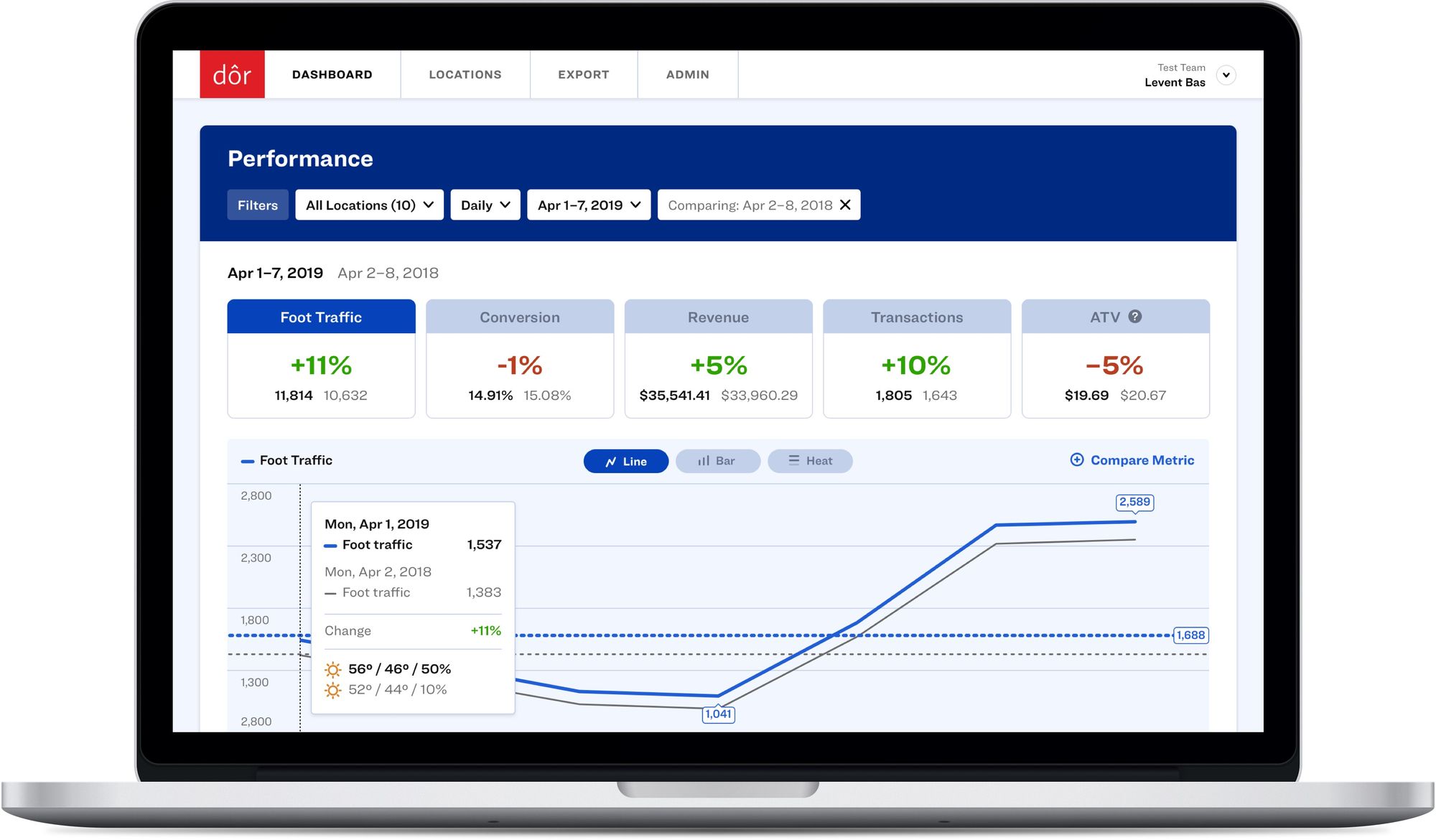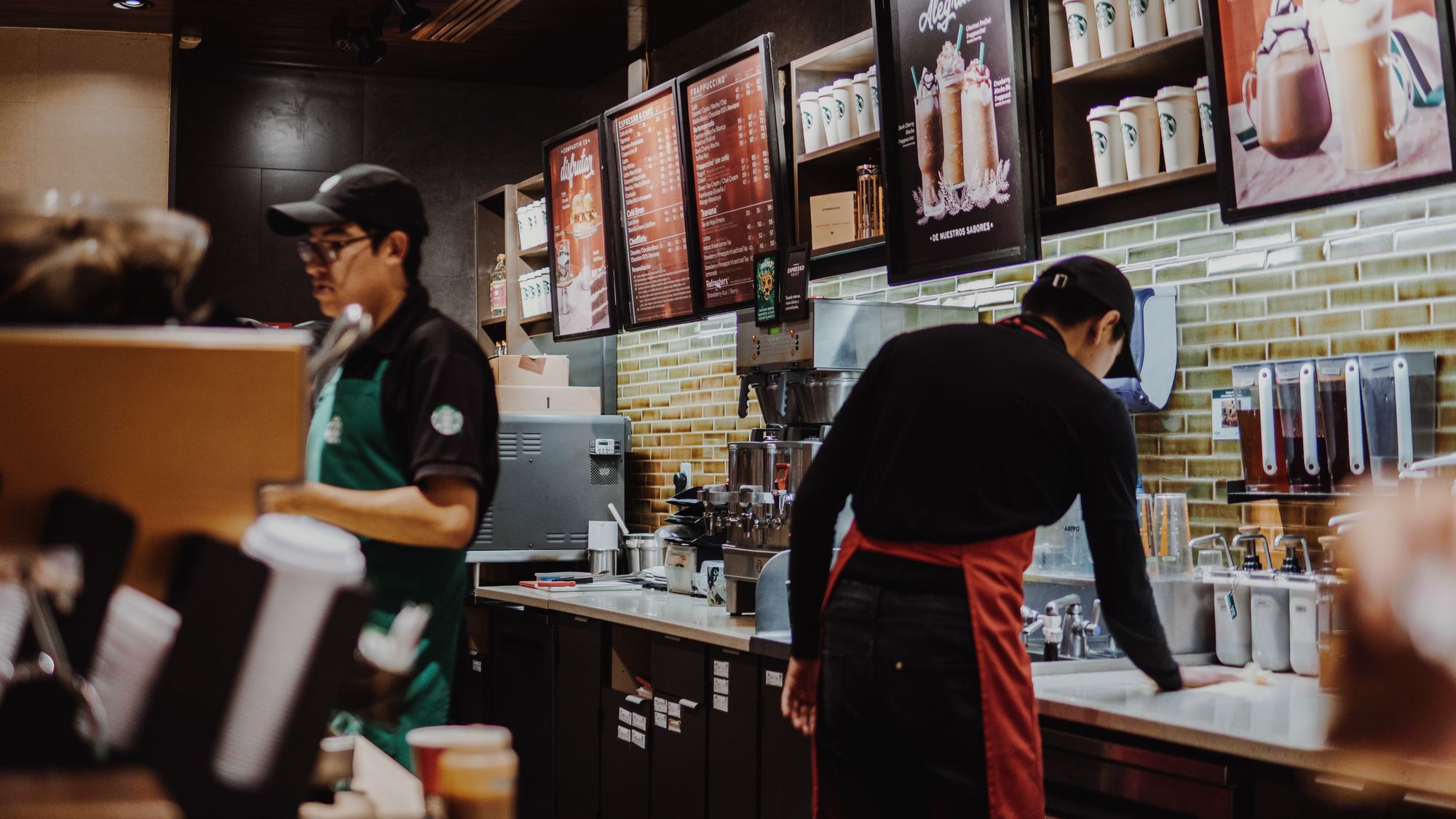Unless you’re singlehandedly running your retailer, you’ve probably thought a great deal about just how many employees you need to have on staff to make your business a success. Not only is there no magic number or formula that’s applicable to all retailers across the board, but your retailer’s staffing needs might change over the course of a day, a month, or even a year. Never to worry, we’ve put together 12 tips to help you strike the perfect balance at your store without being overstaffed or understaffed.

Did you know that a 1% increase in your store’s conversion rate can mean a 10% increase in revenue?
Click here to discover how Dor can help you understand your foot traffic data and make more profitable business decisions.
Ready to purchase? Complete your purchase in just minutes!
What does overstaffing mean in retail?
In the world of retail, overstaffing refers to having too many employees working at the store during a particular time. What constitutes “too many” can widely vary by the size, location, and type of retailer, but a clear sign of overstaffing is when you see employees idling about without a specific task to do.
What does understaffing mean in retail?
Understaffing, on the other hand, is when there are too few employees on hand at a given moment to effectively complete operations and assist customers in a store. Long queues of customers lining up at dressing booths or the checkout area, or workers frantically running around the store, are pretty solid indicators of an understaffed retailer.

What are the consequences of overstaffing and understaffing?
Increased costs
Although increased costs are often a result of overstaffing (due to having to pay said staff), understaffing can also come with sneaky costs such as overtime pay for too few workers—crunch the numbers, and you just may find that hiring a new staff member is more cost-effective in the long run.
Employee dissatisfaction
While we’re on the subject of your workforce, both overstaffing and understaffing can lead to employee dissatisfaction. When you have too many workers on staff, you may find that each person doesn’t have a job to do, which can lead to boredom and disengagement. By contrast, understaffing can result in your workforce being stretched too thin and ultimately cause your employees to feel burned out.
Unhappy customers
For customers who expect assistance, having too few employees on the sales floor can result in a walkout—especially if you have an adequately staffed competitor located nearby. By contrast, having too many employees wandering around your store also doesn’t inspire confidence in customers, and if the space feels too claustrophobic to shop, it can also lead to potential buyers walking out of your store.
Fewer growth opportunities
Let’s say you want to expand your store or even open a second location for your retailer… Good luck making that dream a reality if your current store is overstaffed, as you’ll first have to contend with your unnecessary overhead costs. However, if your store is understaffed, you’ll also find it difficult to assign new tasks to your overworked employees or even get them to train new hires.

12 tips to reduce overstaffing & understaffing
1. Know your customers
If you want to ensure that you have just the right number of staff members on hand for your store, it’s imperative that you know your customers’ shopping behavior. Do they generally need or want hands-on assistance, or is your customer base more of a hands-off crowd? Knowing the answer will help you hire and schedule staff accordingly.
2. Track foot traffic data
Another key factor to consider when it comes to staffing is the amount of foot traffic at your retailer—after all, if you don’t know how many people visit your store, how can you plan accordingly? Opt for an easy-to-install people counter and you can start to get a sense of your store’s peak hours and downtimes right away.
Related: The Ultimate Guide to Foot Traffic and People Counting
3. Focus on year-over-year data
While we’re on the subject of tracking data, it’s a good idea to analyze long-term trends as well as current fluctuations in foot traffic. Knowing historical information such as how many people visited your store during last Christmas, and or which days were most popular among shoppers, can help you plan for this year’s holiday season by ensuring you have just the right number of staff members on hand.
4. Make sure everyone has a job to do
This one might seem obvious, but it’s still worth mentioning... Assigning each employee a specific task has a multitude of benefits. Not only does it help store owners ensure that all required tasks are completed, but it also ensures that tasks are divided more or less fairly among the employees—which is a good way to avoid having either bored or overworked staff members.
5. Hire temporary help
If you know a particularly busy period is coming up—anywhere from a weekend up to a whole season—you may consider hiring temporary staff members to help cover the gaps. Depending on your store’s needs, these can be either part-timers or contracted employees, but what’s important is that both parties have a clear understanding that the employment status is temporary.
6. Offer incentives for unpopular shifts
Let’s face it; there are certain times when no one wants to work in retail, be it Halloween, Thanksgiving, or overwinter holiday season. Instead of risking being understaffed, or hiring and training temporary workers, you might also consider offering your staff incentives such as overtime, time and a half pay, or bonuses to get them to cover these otherwise-unpopular shifts.

7. Use a cloud-based staff scheduling solution
Another way to make sure your retailer is neither understaffed nor overstaffed is to use a cloud-based staff scheduling solution where everyone can easily access and clearly see the staff’s schedule. This idea also minimizes the potential for human error in staff scheduling.
8. Have a backup plan
If you’ve been in the retail game for any length of time, you know that someone will inevitably call in sick or get caught up in a situation they have to deal with urgently. As a store manager, it is your responsibility to not only have a backup plan in circumstances like these but to ensure that your employees (or at least the ones who need to) know about it, too.
9. Make it easy for staff to communicate
Technology has made it commonplace for retail staff to be in constant communication nowadays, whether it’s through tools like Slack or just a simple group chat. While it’s a good idea to make it easy for anyone to quickly bring up and resolve work-related issues, we also recommend laying some ground rules to limit unnecessary banter and avoid encroaching on employees’ personal time.
10. Consider cross-training your team
Although this idea won’t work for every retailer, some stores may benefit from having staff members who are well-versed in various aspects of the store operation. By cross-training employees to take on one another’s tasks in a pinch, you can help mitigate rush hour traffic at the store on days when you might be understaffed.
11. Know who your A team is
There will always be a couple of employees who stand out from others for their hard work and ability—even if they’re not always easy to spot, you can use sales data or customer feedback to figure out who they are. These employees are your A team, and if you’re in charge of staff scheduling, try to prioritize scheduling these workers during times when you need the most help at the store. After all, when rush hour hits, you’d rather have a few long-time employees than a handful of rookies who don’t know what they’re doing.
Related: 12 Things to Consider Before Hiring A New Retail Employee
12. Treat your employees well
One surefire way to ensure your store is always adequately staffed with happy and helpful workers is to treat your employees well. By listening to your staff members’ concerns or constructive criticism, not being too strict with them, and even praising them from time to time, you can help minimize your store’s turnover rate and ensure that you are never understaffed due to quitting workers or overstaffed with sub-par retail employees.